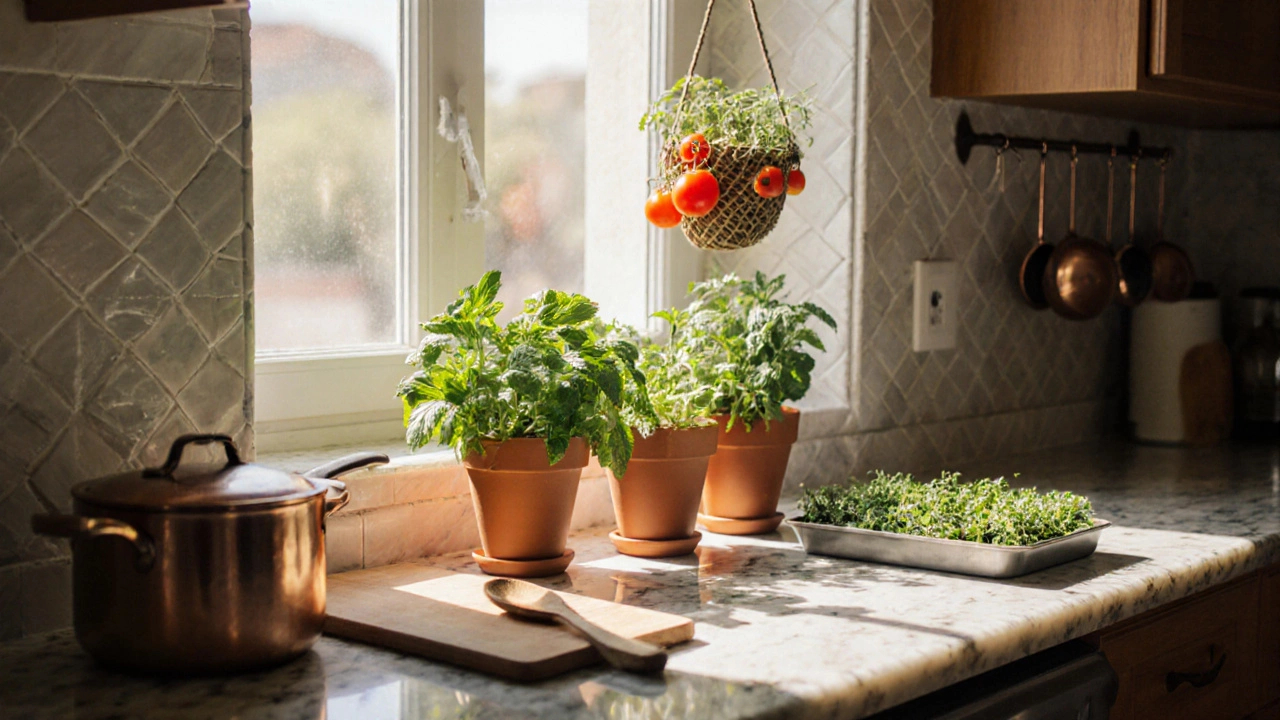Best Herbs for Kitchen Garden – Easy Picks for Fresh Indian Cooking
When planning best herbs for kitchen garden, a curated list of low‑maintenance, culinary‑friendly plants you can keep on a windowsill, balcony or small patio. Also known as kitchen garden herbs, it helps you add fresh flavor to every meal without a trip to the market. It includes basil, sweet, aromatic leaves perfect for chutneys and pesto, sweet basil, mint, cool, refreshing foliage that loves moist soil, peppermint, cilantro, pungent leaves and seeds that lift curries and salads, coriander and parsley, bright, slightly bitter leaves that brighten rice and gravies, flat‑leaf parsley. If you’re hunting for the best herbs for kitchen garden, these four are the proven winners for Indian climates.
All four herbs share three core needs: sunlight, well‑draining soil and regular watering. A sunny spot that gets at least four to six hours of direct light each day lets basil and mint photosynthesize efficiently, while cilantro and parsley tolerate a little shade, making them ideal for balconies that face east or west. Soil should be loamy and slightly moist—mix garden soil with compost in a 2:1 ratio for best results. Over‑watering is a common mistake; let the top inch of soil dry before you water again, especially for basil, which is prone to root rot. These simple requirements create a solid foundation, and they show how best herbs for kitchen garden are accessible to beginners.
Why these herbs matter goes beyond taste. Fresh basil added at the end of cooking preserves its volatile oils, giving you a punch of aroma that dried spice can’t match. Mint leaves, when crushed, release menthol that cools spicy Indian dishes, balancing heat without extra dairy. Cilantro’s unique flavor profile—citrusy yet earthy—brightens soups and salads, while parsley provides a dose of vitamins A, C and K, turning a garnish into nutrition. In short, the right herb enhances flavor, improves health and cuts down on packaged seasonings. This relationship—flavor enhancement leads to reduced processed‑food reliance—is a key reason to grow your own kitchen garden.
Choosing the Right Herbs for Your Space
Start by assessing the space you have. If you have a small balcony, mount a vertical garden bag or use recycled plastic bottles as pots; the lightweight containers keep the load low and allow for easy rearrangement. For indoor windowsills, choose wide, shallow trays that hold enough soil for root spread. Basil thrives in 6‑inch pots, mint does well in larger containers because it can become invasive, cilantro prefers 8‑inch pots to support its taproot, and parsley is happy in 6‑inch round pots. Pairing plants with similar water needs—mint and basil together, cilantro and parsley together—simplifies care and reduces the chance of over‑watering one while neglecting another.
Timing matters too. In most of India, sow seeds in early spring (February–March) when the temperature is moderate. For year‑round harvest, you can start a new batch of cilantro every four weeks, as it bolts quickly in heat. Basil and mint are perennial in mild winters, so a small indoor setup can keep them alive through the cold months. Parsley is a biennial that often behaves like a hardy annual, making it a reliable choice for continuous supply. Understanding these growth cycles helps you plan a staggered harvest, ensuring you never run out of fresh leaves.
Harvesting correctly extends the life of your plants. Pinch off the top sets of basil once the plant reaches 6‑8 inches; this encourages bushier growth and delays flowering, which makes leaves bitter. For mint, snip stems just above a leaf node, leaving enough foliage for regrowth. Cilantro should be trimmed just before it bolts—once you see a flower stalk, cut it to keep leaf production high. Parsley can be harvested by cutting outer leaves first, allowing inner leaves to mature. These practices illustrate how best herbs for kitchen garden rely on regular pruning to stay productive.
Beyond cooking, fresh herbs provide natural pest control. Basil’s essential oils repel flies, while mint deters ants and aphids. Planting these herbs at the edge of a vegetable bed creates a living barrier, reducing the need for chemical sprays. This synergy—herbs protecting other plants while supplying the kitchen—shows how the concept of a kitchen garden intersects with sustainable gardening practices.
Now that you know which herbs to pick, how to grow them, and why they matter, you’re ready to build a vibrant kitchen garden that feeds flavor, health and sustainability. Below you’ll find articles that dive deeper into each herb, offer step‑by‑step planting guides, and share creative recipes that make the most of your fresh harvest. Happy planting!
Top Kitchen Garden Plants for Fresh Flavors All Year Round
Discover the best herbs, greens, and compact fruits for a thriving kitchen garden. Get planting tips, care guides, and a handy comparison table for every small space.
- manufacturing
- India
- food processing
- garden tips
- rice cultivation
- government schemes
- balcony garden
- urban gardening
- balcony gardening
- profitable business
- business ideas
- plastic manufacturing
- drip irrigation
- plant care
- steel manufacturing
- sustainable gardening
- startup ideas
- steel industry
- flower gardening
- textile manufacturers






